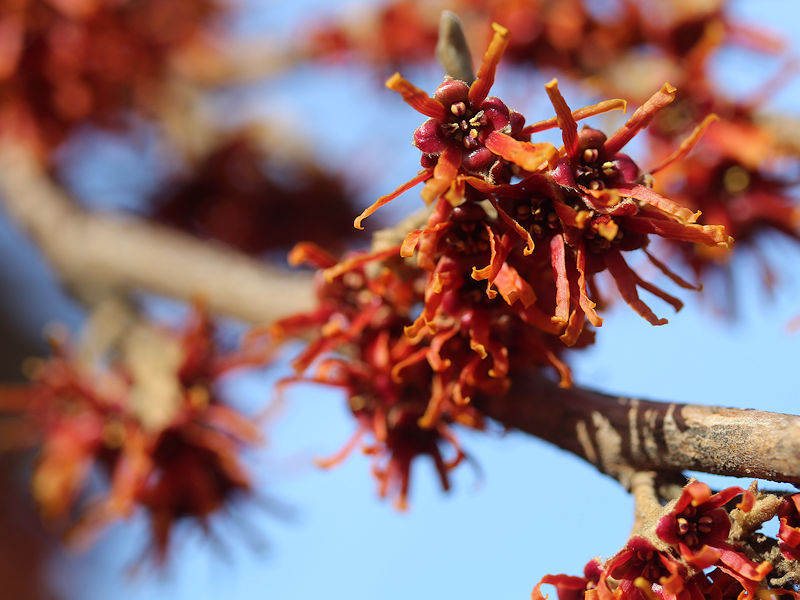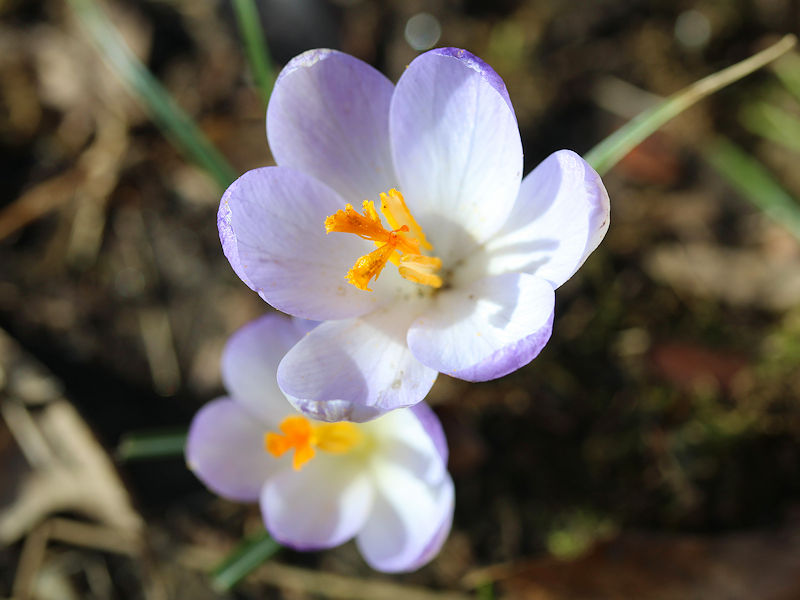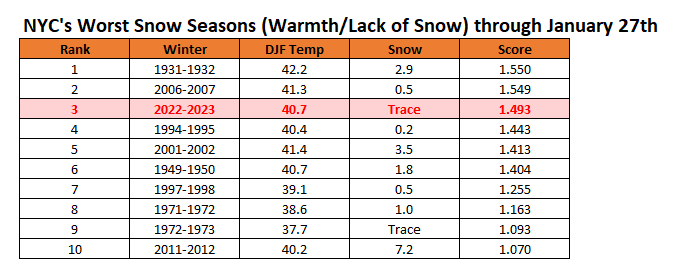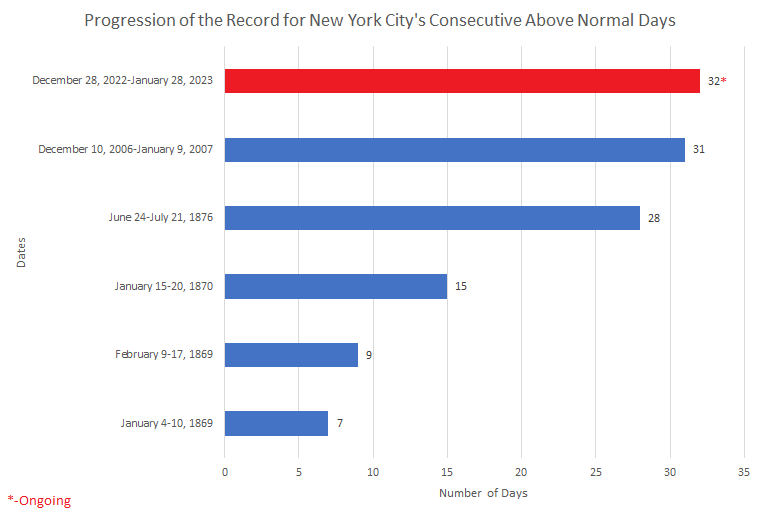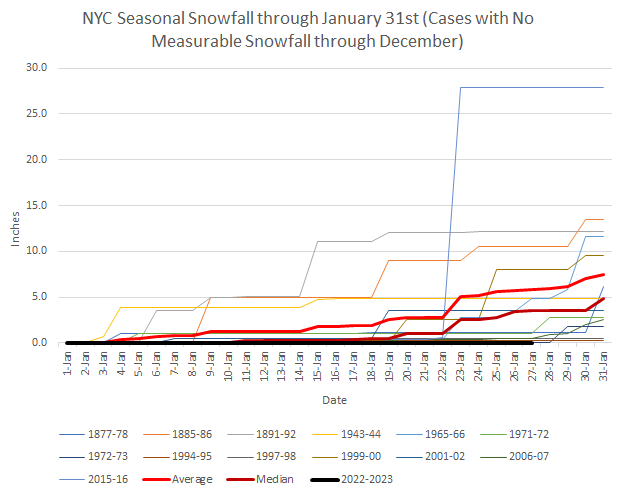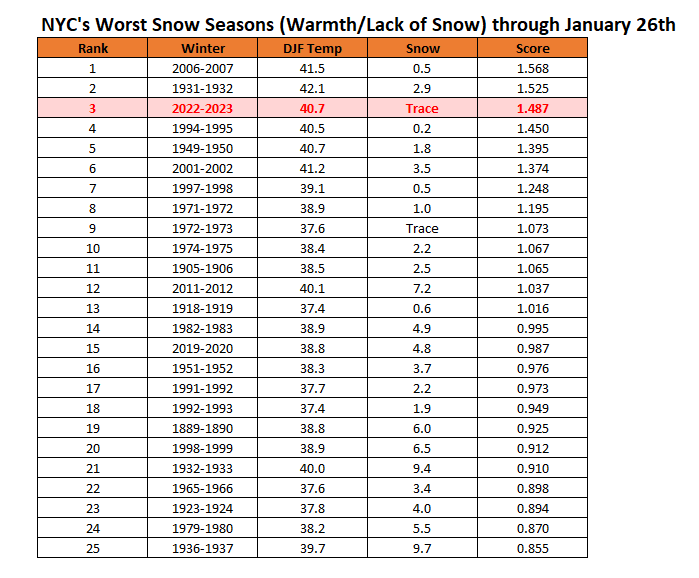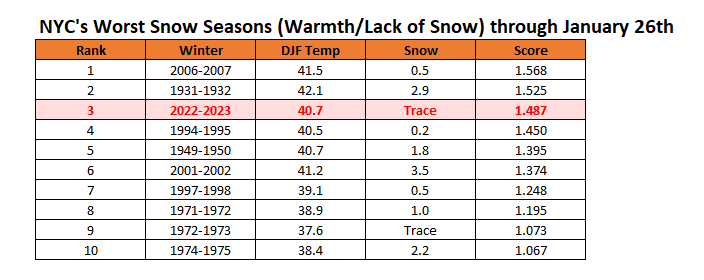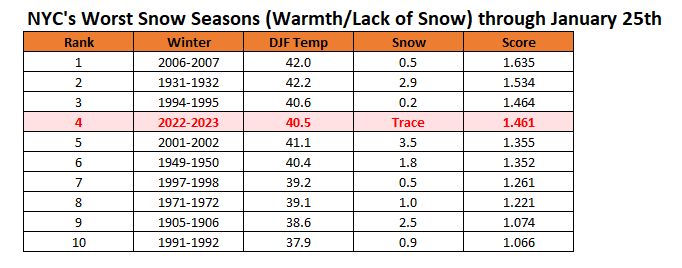-
Posts
22,981 -
Joined
Content Type
Profiles
Blogs
Forums
American Weather
Media Demo
Store
Gallery
Everything posted by donsutherland1
-
No. January 4, 1932 was slightly below normal.
-
Yes. The high was 60 and the low was 33.
-
The January 1-30, 1932 mean temperature was 43.7.
-
The split was 33-24.
-
I believe the 31st will deny us the record.
-
Today was New York City's 32nd consecutive warmer than normal day. That broke the all-time record of 31 days, which was set during December 10, 2006 through January 9, 2007. All two cases with 30 consecutive such days have occurred since 2000. One-third of streaks of 20 or more such days have occurred since 2000. Tomorrow and Monday will be mild days. However, colder air will begin to return to the region late Monday. New York City will see its latest ever first measurable snowfall of the season. The existing record of January 29th was set in 1973. It is likely that New York City will get through all of January without a measurable snowfall. A cooler pattern will move in during the first week of February and last through the week. Saturday could be the coldest day with the temperature rising only into the lower or middle 20s with a low temperature in the low teens in New York City and single digits outside the City. The onset of this cooler period might afford some opportunities for snowfall, but a snowy outcome remains far from certain. Afterward, moderation could begin to occur during the second week of the month. The ENSO Region 1+2 anomaly was -0.3°C and the Region 3.4 anomaly was -0.6°C for the week centered around January 11. For the past six weeks, the ENSO Region 1+2 anomaly has averaged -0.30°C and the ENSO Region 3.4 anomaly has averaged -0.75°C. La Niña conditions are beginning to fade and they should evolve to neutral conditions during late winter or early spring. The SOI was +8.63 today. The preliminary Arctic Oscillation (AO) was +0.991 today. On January 26 the MJO was in Phase 3 at an amplitude of 1.937 (RMM). The January 25-adjusted amplitude was 1.958 (RMM). Based on sensitivity analysis applied to the latest guidance, there is an implied near 100% probability that New York City will have a warmer than normal January (1991-2020 normal). January will likely finish with a mean temperature near 42.7° (9.0° above normal). That will rank January 2023 as the second warmest January on record.
-
January 28, 2023 at the New York Botanical Garden (Bronx, New York). 1. Ozark witch-hazel 2. Amur adonis 3. Japanese apricot 4. Crocuses 5. Hoop petticoat daffodil 6. Japanese mahonia
-
-
Morning thoughts… Clouds will increase today. It will be unseasonably mild. High temperatures will reach the upper 40s and lower 50s in most areas. Likely high temperatures around the region include: New York City (Central Park): 49° Newark: 51° Philadelphia: 52° The mild weather will continue through Monday before it turns colder. Normals: New York City: 30-Year: 39.5°; 15-Year: 39.8° Newark: 30-Year: 40.0°; 15-Year: 40.5° Philadelphia: 30-Year: 41.3°; 15-Year: 41.6°
-
With a low temperature of 36°, New York City's Central Park will record its 32nd consecutive above normal mean temperature. That sets a new record.
-
That’s true. Good point.
-
Tomorrow will be partly sunny and mild. The mercury approach or reach 50° in New York City. New York City is now on track to see its latest ever first measurable snowfall of the season. The existing record of January 29th was set in 1973. There is a distinct possibility that New York City could get through all of January without a measurable snowfall. A cooler pattern will move in during the first week of February and last through the week. The onset of this cooler period might afford some opportunities for snowfall, but a snowy outcome remains far from certain. Afterward, moderation could begin to occur during the second week of the month. The ENSO Region 1+2 anomaly was -0.3°C and the Region 3.4 anomaly was -0.6°C for the week centered around January 11. For the past six weeks, the ENSO Region 1+2 anomaly has averaged -0.30°C and the ENSO Region 3.4 anomaly has averaged -0.75°C. La Niña conditions are beginning to fade and they should evolve to neutral conditions during late winter or early spring. The SOI was -3.48 today. The preliminary Arctic Oscillation (AO) was +0.826 today. On January 25 the MJO was in Phase 3 at an amplitude of 1.959 (RMM). The January 24-adjusted amplitude was 1.589 (RMM). Based on sensitivity analysis applied to the latest guidance, there is an implied near 100% probability that New York City will have a warmer than normal January (1991-2020 normal). January will likely finish with a mean temperature near 42.5° (8.8° above normal). That will rank January 2023 as the second warmest January on record.
-
Winter 2022-2023 seems to have "flat-lined." Is there an Automated External Defibrillator to shock some life into Winter 2022-2023? Snowfall outcomes for all cases where NYC saw no measurable snow through December 31st.
-
I agree.
-
-
Thanks Winterwx21. The variability between snowy winters and those with a noted lack of snowfall could increase as we move through the transition. Perhaps there is already somewhat of a signal starting to appear when it comes to measurable snowfall droughts. 6 of the 11 (55%) stretches of 300 or more days without measurable snow have occurred since 2000. If one throws in 1997-98, 7 of the 11 (64%) have occurred since 1990. If one expands the pool to cases of 290 days or more, 9/21 (43%) of such streaks have occurred since 2000 while 10/21 (48%) have occurred since 1990.
-
-
Thanks for sharing the memory.
-
Even in a lower snow regime, there will sometimes be big snowstorms. Washington, DC is essentially where Richmond was in the early 20th century. It can still have snowy winters, but those will be less frequent than they once were.
-
In New York City, winters are warming, the measurable snow season is shrinking in length, and the average number of events is falling. However, the benefits of added moisture (warm air holds more moisture) has contributed to rising seasonal snowfall as the average event is now larger. There will come a time when the warming is sufficiently great to offset the benefits of added moisture. That process is underway in Washington, DC, but not Philadelphia or New York. It could be another decade or two before such a trend develops in Philadelphia and New York City (an additional 1.0°-1.5° of winter warming is likely needed if Washington's data is representative). As we move toward that inflection point, one will probably see greater variability between high snow and very low snowfall winters, the latter will often be exceptionally warm even against the 1991-2020 reference period.
-
That was 2001-02. 2000-01 was a snowy winter.
-
Yes. The record fewest such days in January is 4. That occurred in 1932.
-
It would start during the second week of February. It's tough to pin down the exact dates. Then, it could continue for 1-2 weeks, but skill drops off sharply, so we'll have to see where things stand. There is some support on yesterday's EPS weeklies for such an outcome.
-
It's tough to know, as the La Niña is beginning to fade, though discontinuously. I suspect that we'll see at least 1-2 weeks of above normal temperatures once the warmup occurs. Late February-early March might hold some additional opportunities for snowfall, if some past La Niña winters are representative.
-





